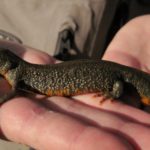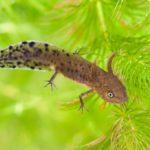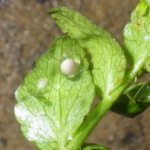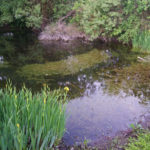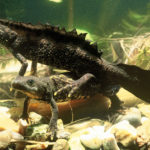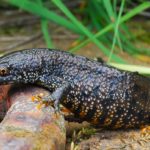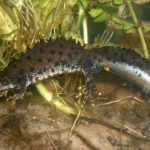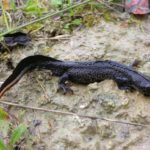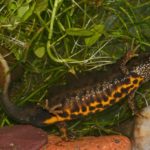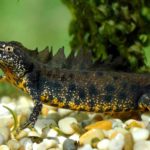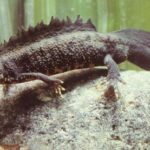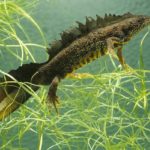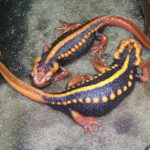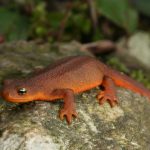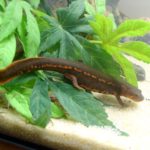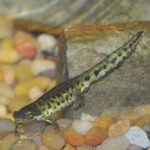Great Crested Newt
Great crested newt is a species of newt belonging to the family Salamandridae, found in Europe and parts of Asia.
| Kingdom | Animalia |
| Phylum | Chordata |
| Class | Amphibia |
| Order | Caudata |
| Family | Salamandridae |
| Genus | Triturus |
| Scientific Name | Triturus cristatus |
| Other Names | Northern crested newt, warty newt |
| Length | Up to 16 cm |
| Weight | Males: 7.6 -10.6 g Females: 6.3 – 9.4 g |
| Color | Dark gray-brown upper surface and sides, covered with dark spots; yellow or orange-colored underside covered in large black uneven patches |
| Distribution | Europe, parts of Asia |
| Habitat | Scrub, rough grass, and woodland close to breeding water bodies |
| Diet | Terrestrial prey includes insects, worms, and other invertebrates while aquatic prey consists of tadpoles, young froglets, other newts, insect larvae, and water snails |
| Hibernation Fact | Hibernate during winter under logs or stones or in the mud at the bottom of its breeding water bodies |
| Predators | Fish, snakes, water birds, hedgehogs, weasels, stoats, rats |
| Breeding Season | End of winter |
| Mode of Reproduction | Oviparous (egg laying) |
| Clutch Size | 2 to 3 eggs per day; 200 to 300 eggs in total between March and middle of July |
| Incubation Period | Around 3 weeks |
| Metamorphosis Period | Around 5 months |
| Reproductive Age | 2 or 3 years of age |
| Average Lifespan | Up to 10 years in general; however, can live up to 27 years |
| IUCN Conservation Status | Least Concern |
Great Crested Newt Pictures Gallery
- Female Great Crested Newt
- Great Crested Newt Baby
- Great Crested Newt Eggs
- Great Crested Newt Habitat
- Great Crested Newt Images
- Great Crested Newt Pictures
- Great Crested Newt
- Great Crested Newts
- Northern Crested Newt
- The Great Crested Newt
- Triturus Cristatus
- Warty Newt
Published on March 24th 2017 by staff under Newts. Article was last reviewed on 30th September 2019.
